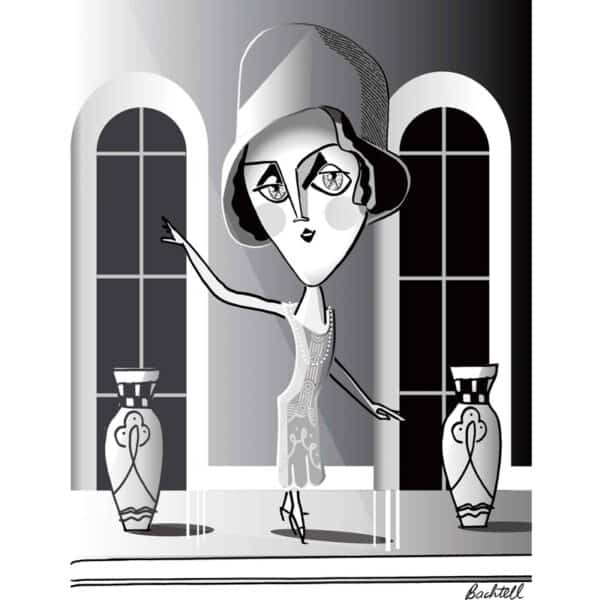BEHIND THE GLAMOUR
By Sherry Thomas
ILLUSTRATION BY TOM BACHTELL
By Sherry Thomas
ILLUSTRATION BY TOM BACHTELL

“Once I thought that Lake Forest was the most glamorous place in the world,” American author F. Scott Fitzgerald wrote to his daughter in 1940, just six months before his death. “Maybe it was.” There is a palpable angst in that statement, a sense of longing that lingered decades after the author famously met and courted Ginevra King—a young debutante who ran with an exclusive Lake Forest sorority known as “The Big Four” (they even had rings that bore that selfdubbed nickname). While Miss King would ultimately break the aspiring writer’s heart, Fitzgerald’s visits to Lake Forest in 1915 and 1916 changed his work forever, ultimately inspiring one of the most famous novels of the 20th century—The Great Gatsby. As the book turns 100 this year, the History Center of Lake Forest- Lake Bluff is gearing up for the April 4 launch of “Behind the Glamour: Inside (and Outside) F. Scott Fitzgerald’s Lake Forest,” a new exhibit devoted to the influence of the author’s time in Lake Forest and the subsequent mythologizing of the Gatsby lifestyle. “We’re going to examine both Fitzgerald’s work through the lens of Lake Forest and Lake Forest through the lens of what Fitzgerald saw, focusing specifically on Ginevra King and “The Big Four’ debutantes,” says Deputy Director and Head of Curation Laurie Stein, explaining that Francis Scott Key Fitzgerald (second cousin of the author of the national anthem) met King at a skating party in his hometown of St. Paul, Minnesota. “They embarked on a correspondence and would write to each other. He especially wrote voluminous letters, as you can imagine.” Fitzgerald’s visits to King in Lake Forest exposed him to a new world of wealth and high society. His experience socializing with King and her glamorous “Big Four” counterparts—Edith Cummings, Courtney Letts, and Margaret “Peg” Carry—is brought to life both in Gatsby and his short stories. “Edith Cummings was a very talented golfer and is seen as the inspiration for the character of Jordan Baker in The Great Gatsby. Beyond that, there are multiple references in his work to Lake Forest itself. He name drops the city again when he mentions that Tom Buchanan was bringing polo ponies from Lake Forest,” adds Stein. “His visits to Lake Forest cemented his awareness of how hard it was to break into the inner sanctum of the wealthy and elite. You can see that in both Nick and Gatsby.” Fitzgerald learned this the hard way as King quickly moved on, a rejection he ultimately blamed on his family’s socioeconomic status. It’s no wonder then that his descriptions of Daisy Buchanan were dripping with quiet resentment. In one passage, he writes that “her artificial world was redolent of orchids and pleasant, cheerful snobbery and orchestras which set the rhythm of the year, summing up the sadness and suggestiveness of life in new tunes.” Stein says that in addition to showcasing the influence of Lake Forest on this legendary work of literature, the exhibit will explore the complex lives of King and her fellow debutantes and how marital decisions significantly controlled their fate beyond their hearts. “They all went on to have very interesting lives and what happened to them says a lot about opportunity for women in that time,” she explains. “It’s fascinating from a historical perspective to see the impact of our community on something that’s been read by so many.” Interestingly enough, when King and Fitzgerald ended their relationship, they made a pact to burn the letters they had written to each other. As Fitzgerald’s many biographies can attest, she kept her promise. He did not.
“Behind the Glamour: Inside (and Outside) F. Scott Fitzgerald’s Lake Forest” will run from April 4 to October 4 at the History Center of Lake Forest-Lake Bluff. For more information, visit lflbhistory.org.
Sign Up for the JWC Media Email